By Eric J. Savitz, editor-in-chief, GM News
Who wouldn’t want a jet-powered car?
The idea is so inherently appealing. Cram a turbine engine into a truck or sedan and zoom off at supersonic speed. It conjures up fantasies of whooshing across the Bonneville Salt Flats at a gazillion miles per hour. Alas, while producing turbine-powered vehicles isn’t quite as crazy as it sounds, for an assortment of reasons, GM never commercialized them – and neither did anyone else.
But not for lack of trying.
For more than three decades, General Motors - and some of our competitors - attempted to adopt turbines for automotive use. The goal wasn’t to set new land speed records, but rather to offer a viable alternative to internal combustion engines, one which could use a range of alternative fuels at a time when the world feared running out of crude oil.
We never quite got there. It’s worth revisiting what happened.
Let me say right up front that I’m no automotive engineer. But it helps to know a few basics:
Turbine engines suck in air, the air is compressed by a series of spinning blades, then mixed with fuel and ignited; the resultant energy is used to turn another set of spinning blades – the turbine - which for wheeled vehicles is attached to a driveshaft. (That’s probably the most overly simplified explanation of how an engine works that you will ever read.)
Anyway, here’s why turbines were tempting: They have far fewer moving parts than conventional engines – there are no pistons - which makes them at least in theory more reliable. Also they are compact in size, and they are smooth and stable, with minimal vibration. (That said, turbine engines operate at very high idle rates, which makes them sound like commercial jets.) Not least, turbine engines can be powered by propane, kerosene, aviation fuel, landfill gas, ammonia, basically anything combustible. Chrysler once demoed one that ran on tequila.
General Motors began investigating turbine engines as early as the 1940s, documents from the GM Heritage center show. Over the next few decades, we made multiple attempts to use them. But there were problems: Turbine engines run superhot, with exhaust temperatures that can exceed 1,000 degrees Fahrenheit. They are inefficient at slow speeds. They are highly polluting. And they are expensive to produce. Alas, the issues were too great, and we never sold turbine-powered vehicles. But the experiment was fascinating.
Let’s take a little turbine-powered voyage through GM history.
The Firebird era
In the 1950s, GM rolled out a series of turbine-powered concept cars, starting with the 1954 XP-21 Firebird 1, the first gas turbine automobile ever built and tested in the U.S. (Note that there’s no connection – other than the name - to the sporty Pontiac Firebird, which GM produced from 1967 to 2002.)
Caption: The 1954 Firebird I turbine engine concept car.
According to the Heritage Center, the idea for the single-seat Firebird, which had a sleek white fiberglass-reinforced streamlined plastic body, and looked ready for liftoff, came from the legendary Harley Earl, GM’s first dedicated design chief. The turbine engine for the Firebird 1 had the delightful name “Whirlfire,” variations of which were used in all of GM’s subsequent turbine experiments.
Caption: The 1956 Firebird II
The Firebird 1 was followed, naturally, by the Firebird II, in 1956. This was another concept vehicle, with a titanium body which looked a little more car-like than its predecessor, and less like something built by NASA, though it still featured a giant shark-style fin, and aviation style gauges on the dash. In 1958,
Caption: The 1958 Firebird III
GM unveiled Firebird III, all angles and fins, with twin bubble cockpits for the driver and passenger, and air intakes both in the front and on the sides. The overall effect was a vehicle that looked ready to speed off at a million miles an hour. The GM Heritage collection has all three concept cars, none of which were ever sold commercially. And they look as cool as ever.
Caption: Former GM design chief Harley with (from left) the Firebird I, II, and III concept cars.
Almost forgotten were GM’s experiments in the same period with turbine-powered passenger buses known as Turbocruisers (sometimes we called them Turbo Cruisers, with a space in the middle, and sometimes we added a hyphen, Turbo-Cruiser), in which Whirlfire engines were installed in conventional models built by the GM Truck and Coach Division. The original Turbocruiser, unveiled in 1953, was the world’s first turbine-powered bus. GM displayed both the first gen Firebird and the Turbocruiser at a nearly month long 1955 Chicago event we called “Powerama,” which was focused primarily on hyping up the appeal of diesel engines.
Turbocruiser I was followed logically enough by the Turbocruisers II and III…and then IV and V, spread out over the next two decades, with the final attempt in 1972. It was another interesting experiment, but one which did not result in long-term changes in bus design. (GM exited the bus business for good in 1987.)
The Bison
Caption: The Bison concept truck
One lesser-known experiment was the sci-fi looking GM Bison, a fantastical attempt at rethinking long-distance trucking. Displayed at the 1964 New York World’s Fair, the Bison concept had a cab that was considerably lower to the ground than a conventional truck, with a cockpit that included wrap-around glass. The cabin had no door; the entire cockpit cover hinged forward like a clam shell. It looked like a smiling robotic moon buggy. The Bison had a twin-turbine power plant intended to produce 1,000 horsepower, which was housed in a pod behind the cab but ahead of the trailer. Inside the cabin, the steering wheel was replaced with an aircraft-style yoke with two control handles; the center console included a telephone.
It was arguably the coolest truck GM ever designed. But it was not a working prototype, and the Bison was never commercialized.
Caption: Another view of the Bison concept truck.
Turbo Titan III
In 1965, we took a more serious stab at turbine powered trucks, with the Chevrolet Turbo Titan III. The Turbo Titan III had huge air scoops in the front, with front headlights and turn signals that folded back when not in use. While it had a few design cues from the Bison, the Turbo Titan III looked more like a conventional tractor trailer. (It had actual doors, for instance, and a standard-sized trailer.) In promotional materials, GM noted that two previous versions – the Turbo Titan I and II – had “rolled up many thousands of miles … and proved conclusively the performance, economy and durability potential of the turbine.” (There’s little information to be found in the GM archive on the first two generations of Turbo Titans.) The Turbo Titan III brochure added that “the interior is right out of the space age” – and that that the exterior panels were produced from fiberglass-reinforced polyester.
Caption: The Turbo Titan III in front of the iconic globe on the grounds of the 1964 World’s Fair in Queens New York.
One odd feature of the “Truck of Tomorrow” was a twin-dial system that replaced the conventional steering wheel, an approach quite different from the one included in the Bison. (See the photo.) Powered by a successor to the Whirlfire, GM conceded at the time that the turbine design was “too costly to produce in quantity,” but that “with the kind of production know-how on tap at Chevrolet, it’s just a matter of time.”
Caption: Dash and twin-wheel steering system of the Turbo Titan III, along with a front view of the truck and a close up of the air scoop, with lights extended.
Coal cars
In June 1981, at an event marking the 25th anniversary of GM’s Warren, Michigan, technical center, GM showed off a new approach to the turbine engine opportunity, this time powered by – I’m not making this up – coal.
More specifically, GM demonstrated a Cadillac Eldorado and an Oldsmobile Delta 88 fitted with an engine powered by superfine powdered coal dust, with particles three microns in diameter, finer than powdered sugar. “Since coal represents a particularly attractive fuel because of its great abundance in the United States, it could significantly decrease our dependance on imported oil if it can be further developer for automotive use,” the company said in a press announcement of the coal-powered car experiment.
Caption: The coal-powder version of the 1979 Cadillac Eldorado.
This was not actually a new idea. Rudolf Diesel – namesake of the diesel engine – had experimented with coal dust as a fuel decades earlier. With the GM experiments, the powdered coal was stored in a tank under the hood, attached to an air compressor that blew the fuel into the turbine engine. GM had previously tried engines powered by coal-derived methanol – but using coal dust directly was viewed as far more efficient, and potentially much cheaper than gasoline. And in fact coal is a much less expensive source of fuel than petroleum as measured by BTUs per dollar. But there were problems, not the least of which is that burning coal produces ash, smoke, and high levels of sulfur and other various pollutants.
The real point of the coal experiment was to demonstrate that GM was thinking about options to consider for the day when the world would run out of petroleum – no small concern in the wake of the 1970s energy crisis just a few years earlier.
“We’re just trying to show that we are not about to run out of energy,” GM Vice Chairman Howard Kehrl said at the time, according to the New York Times. “We can continue to have cars essentially as we know them today for hundreds of years.”
The bottom line
In an announcement about the Firebird and Turbocruiser experiments in 1955, we made a blunt assessment of the outlook for turbines.
“The question of whether the gas turbine will supplant the piston engine is likely to be resolved by economics,” we wrote in a press release. “GM engineers point out that if this engine ever offers the motorist more for his dollar than the piston engine, then his preference likely will favor the turbine.”
Of course, that’s not how it played out.
Jeffrey Luke, a 39-year GM vet who is now executive chief engineer for global engines, transmissions, hybrids, and racing propulsion programs, said in an interview with GM News that there were several reasons turbine engines didn’t work for wheeled passenger vehicles, related to fuel efficiency and emissions, cost, complexity and integration.
Turbine engines operate most efficiently in high load conditions and are thus unfeasible for cars and trucks that operate at part load, significantly impacting fuel economy. Emissions in the form of nitrogen oxided is very high. Also, the special materials used in the design of the compressor, combustion chamber and turbine are high cost and need special manufacturing processes to assemble. Finally, integration of turbine engines turned out to be “impractical,” he says.
“We could never make the business case, and it couldn’t be well integrated into a vehicle in a way that was practical,” Luke said. “And under today’s emissions standards, they would never make it.”
But it sure was fun trying.
Editor’s note: Retro Rides highlights noteworthy vehicles from the long history of General Motors. Over more than a century, GM has produced a huge variety of cars, trucks, SUVs, vans, station wagons, and even buses, some fondly remembered and sought after by collectors, others largely forgotten but worthy of rediscovery. With Retro Rides, we’re casting a fresh spotlight on some of GM’s great design, engineering and technology ideas of the past. Big thanks to the GM Heritage Center and Archives for making this series possible. If there’s a GM vehicle you think we should revisit, reach out to news@gm.com.
And catch up with all of our Retro Rides stories on GM News.

Who wouldn’t want a jet-powered car?
The idea is so inherently appealing. Cram a turbine engine into a truck or sedan and zoom off at supersonic speed. It conjures up fantasies of whooshing across the Bonneville Salt Flats at a gazillion miles per hour. Alas, while producing turbine-powered vehicles isn’t quite as crazy as it sounds, for an assortment of reasons, GM never commercialized them – and neither did anyone else.
But not for lack of trying.
For more than three decades, General Motors - and some of our competitors - attempted to adopt turbines for automotive use. The goal wasn’t to set new land speed records, but rather to offer a viable alternative to internal combustion engines, one which could use a range of alternative fuels at a time when the world feared running out of crude oil.
We never quite got there. It’s worth revisiting what happened.
Let me say right up front that I’m no automotive engineer. But it helps to know a few basics:
Turbine engines suck in air, the air is compressed by a series of spinning blades, then mixed with fuel and ignited; the resultant energy is used to turn another set of spinning blades – the turbine - which for wheeled vehicles is attached to a driveshaft. (That’s probably the most overly simplified explanation of how an engine works that you will ever read.)
Anyway, here’s why turbines were tempting: They have far fewer moving parts than conventional engines – there are no pistons - which makes them at least in theory more reliable. Also they are compact in size, and they are smooth and stable, with minimal vibration. (That said, turbine engines operate at very high idle rates, which makes them sound like commercial jets.) Not least, turbine engines can be powered by propane, kerosene, aviation fuel, landfill gas, ammonia, basically anything combustible. Chrysler once demoed one that ran on tequila.
General Motors began investigating turbine engines as early as the 1940s, documents from the GM Heritage center show. Over the next few decades, we made multiple attempts to use them. But there were problems: Turbine engines run superhot, with exhaust temperatures that can exceed 1,000 degrees Fahrenheit. They are inefficient at slow speeds. They are highly polluting. And they are expensive to produce. Alas, the issues were too great, and we never sold turbine-powered vehicles. But the experiment was fascinating.
Let’s take a little turbine-powered voyage through GM history.
The Firebird era
In the 1950s, GM rolled out a series of turbine-powered concept cars, starting with the 1954 XP-21 Firebird 1, the first gas turbine automobile ever built and tested in the U.S. (Note that there’s no connection – other than the name - to the sporty Pontiac Firebird, which GM produced from 1967 to 2002.)
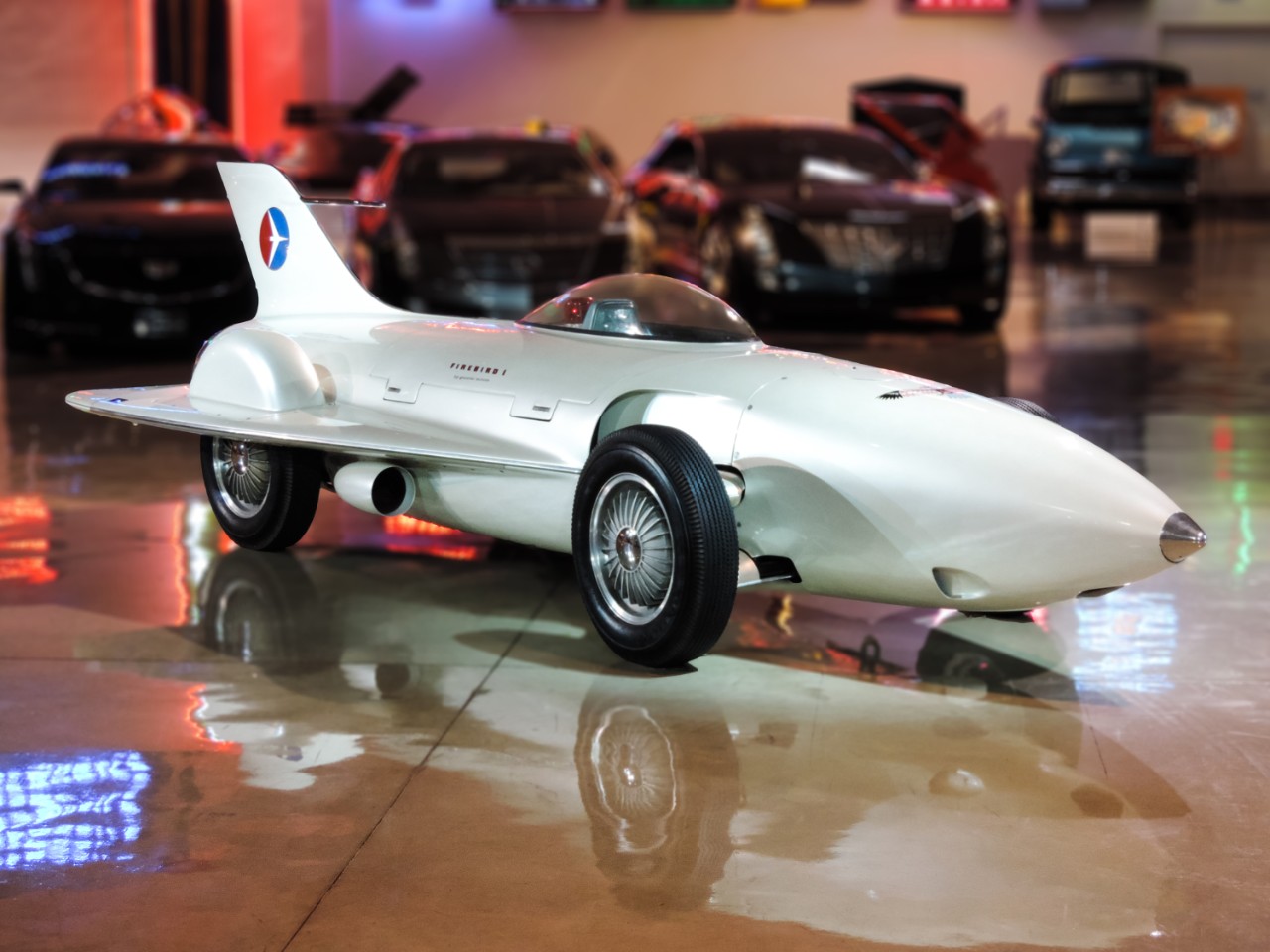
According to the Heritage Center, the idea for the single-seat Firebird, which had a sleek white fiberglass-reinforced streamlined plastic body, and looked ready for liftoff, came from the legendary Harley Earl, GM’s first dedicated design chief. The turbine engine for the Firebird 1 had the delightful name “Whirlfire,” variations of which were used in all of GM’s subsequent turbine experiments.
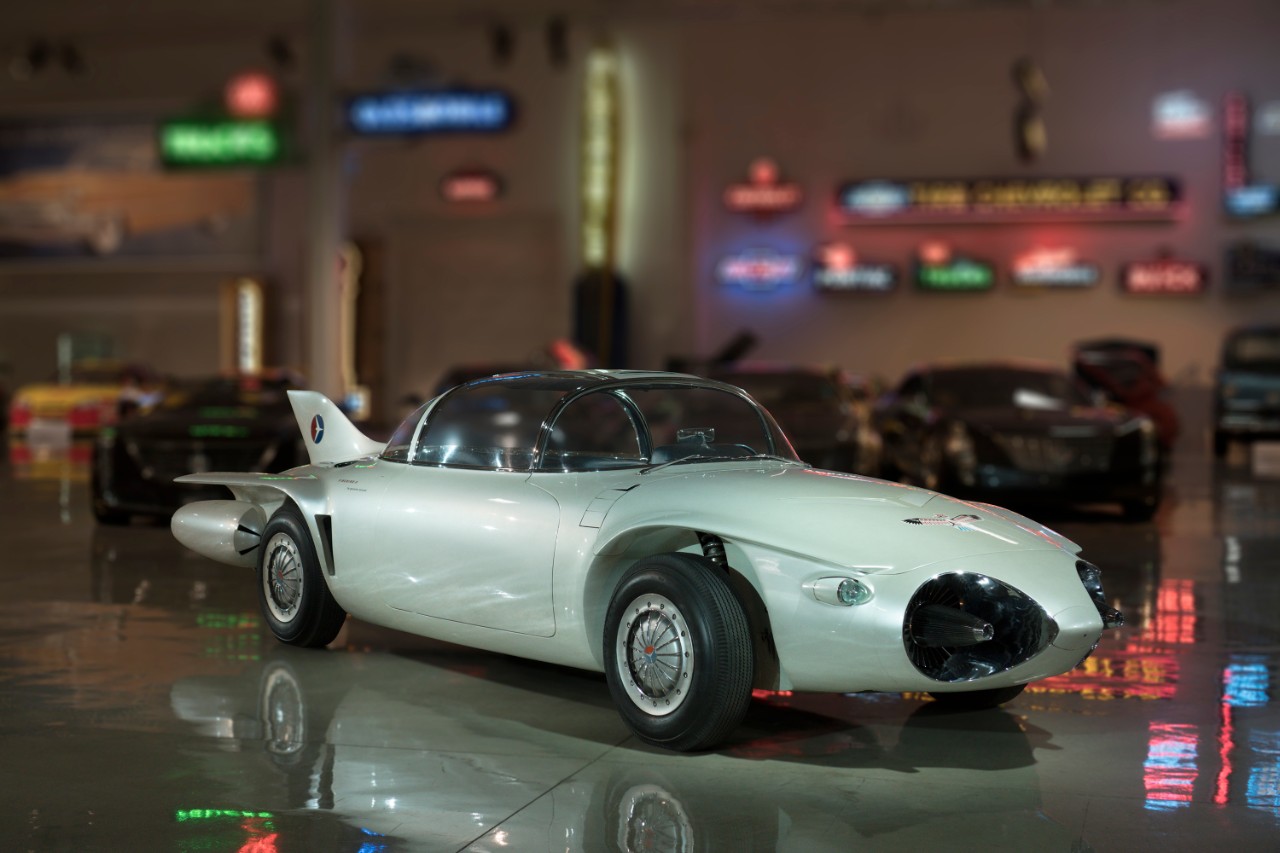
The Firebird 1 was followed, naturally, by the Firebird II, in 1956. This was another concept vehicle, with a titanium body which looked a little more car-like than its predecessor, and less like something built by NASA, though it still featured a giant shark-style fin, and aviation style gauges on the dash. In 1958,
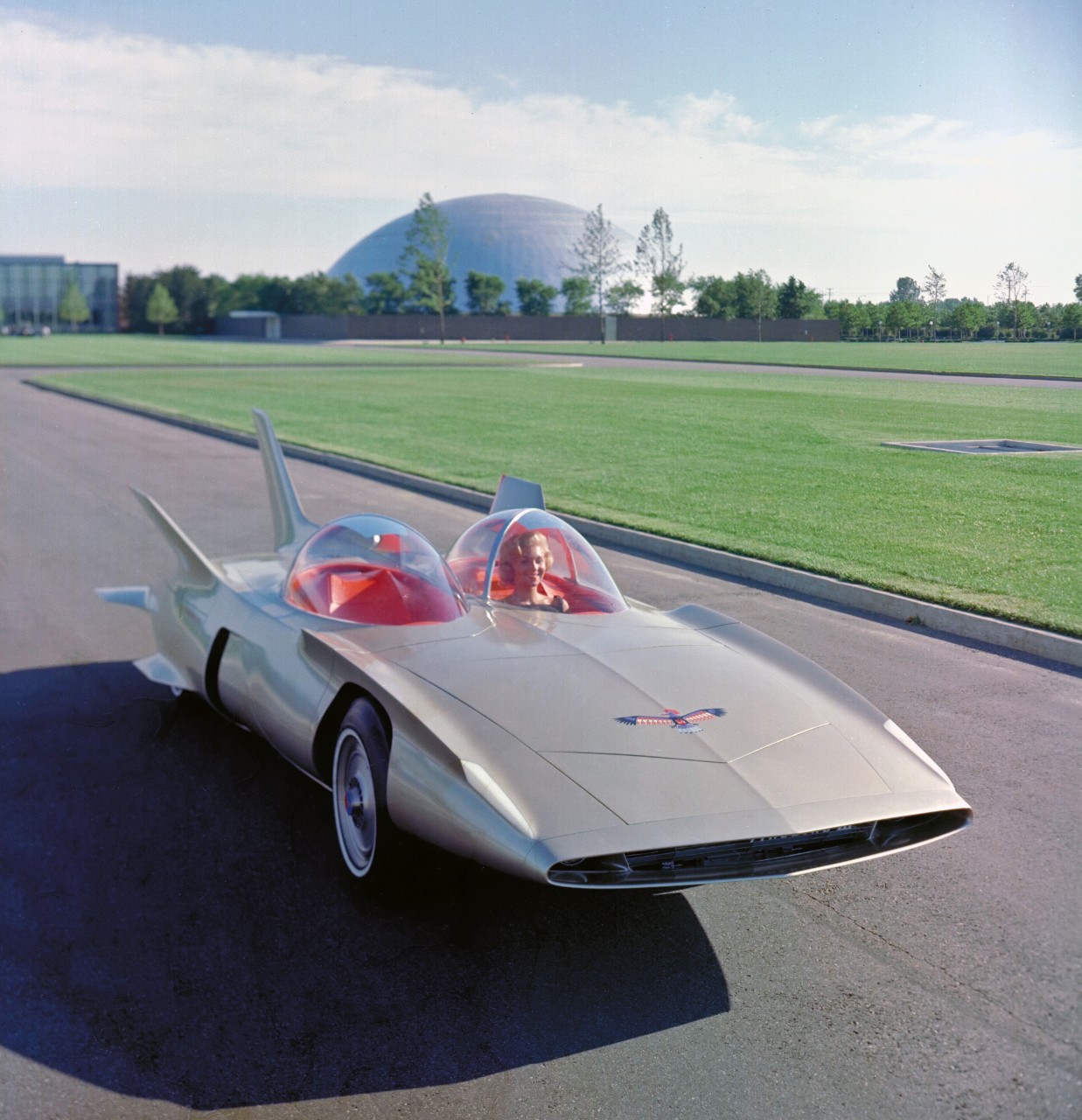
GM unveiled Firebird III, all angles and fins, with twin bubble cockpits for the driver and passenger, and air intakes both in the front and on the sides. The overall effect was a vehicle that looked ready to speed off at a million miles an hour. The GM Heritage collection has all three concept cars, none of which were ever sold commercially. And they look as cool as ever.
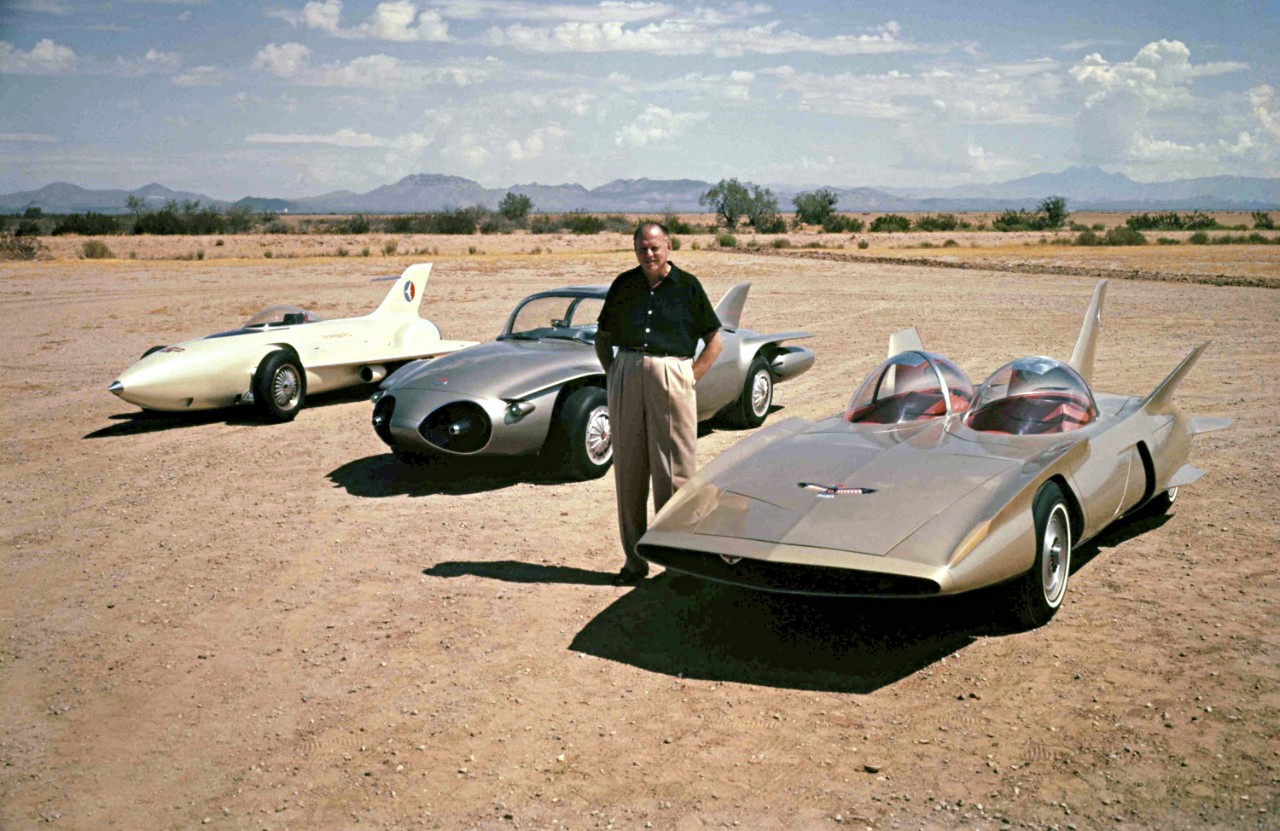
Almost forgotten were GM’s experiments in the same period with turbine-powered passenger buses known as Turbocruisers (sometimes we called them Turbo Cruisers, with a space in the middle, and sometimes we added a hyphen, Turbo-Cruiser), in which Whirlfire engines were installed in conventional models built by the GM Truck and Coach Division. The original Turbocruiser, unveiled in 1953, was the world’s first turbine-powered bus. GM displayed both the first gen Firebird and the Turbocruiser at a nearly month long 1955 Chicago event we called “Powerama,” which was focused primarily on hyping up the appeal of diesel engines.
Turbocruiser I was followed logically enough by the Turbocruisers II and III…and then IV and V, spread out over the next two decades, with the final attempt in 1972. It was another interesting experiment, but one which did not result in long-term changes in bus design. (GM exited the bus business for good in 1987.)
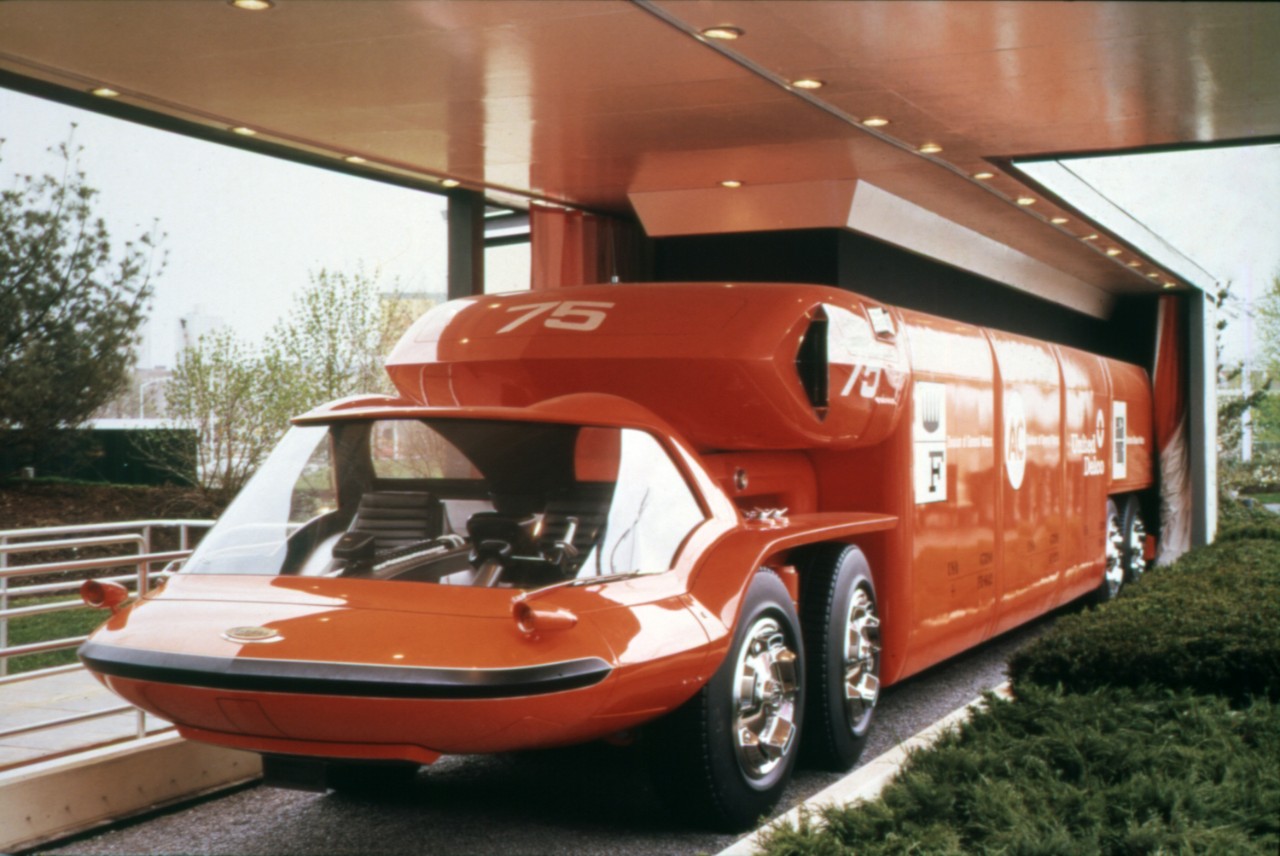
One lesser-known experiment was the sci-fi looking GM Bison, a fantastical attempt at rethinking long-distance trucking. Displayed at the 1964 New York World’s Fair, the Bison concept had a cab that was considerably lower to the ground than a conventional truck, with a cockpit that included wrap-around glass. The cabin had no door; the entire cockpit cover hinged forward like a clam shell. It looked like a smiling robotic moon buggy. The Bison had a twin-turbine power plant intended to produce 1,000 horsepower, which was housed in a pod behind the cab but ahead of the trailer. Inside the cabin, the steering wheel was replaced with an aircraft-style yoke with two control handles; the center console included a telephone.
It was arguably the coolest truck GM ever designed. But it was not a working prototype, and the Bison was never commercialized.
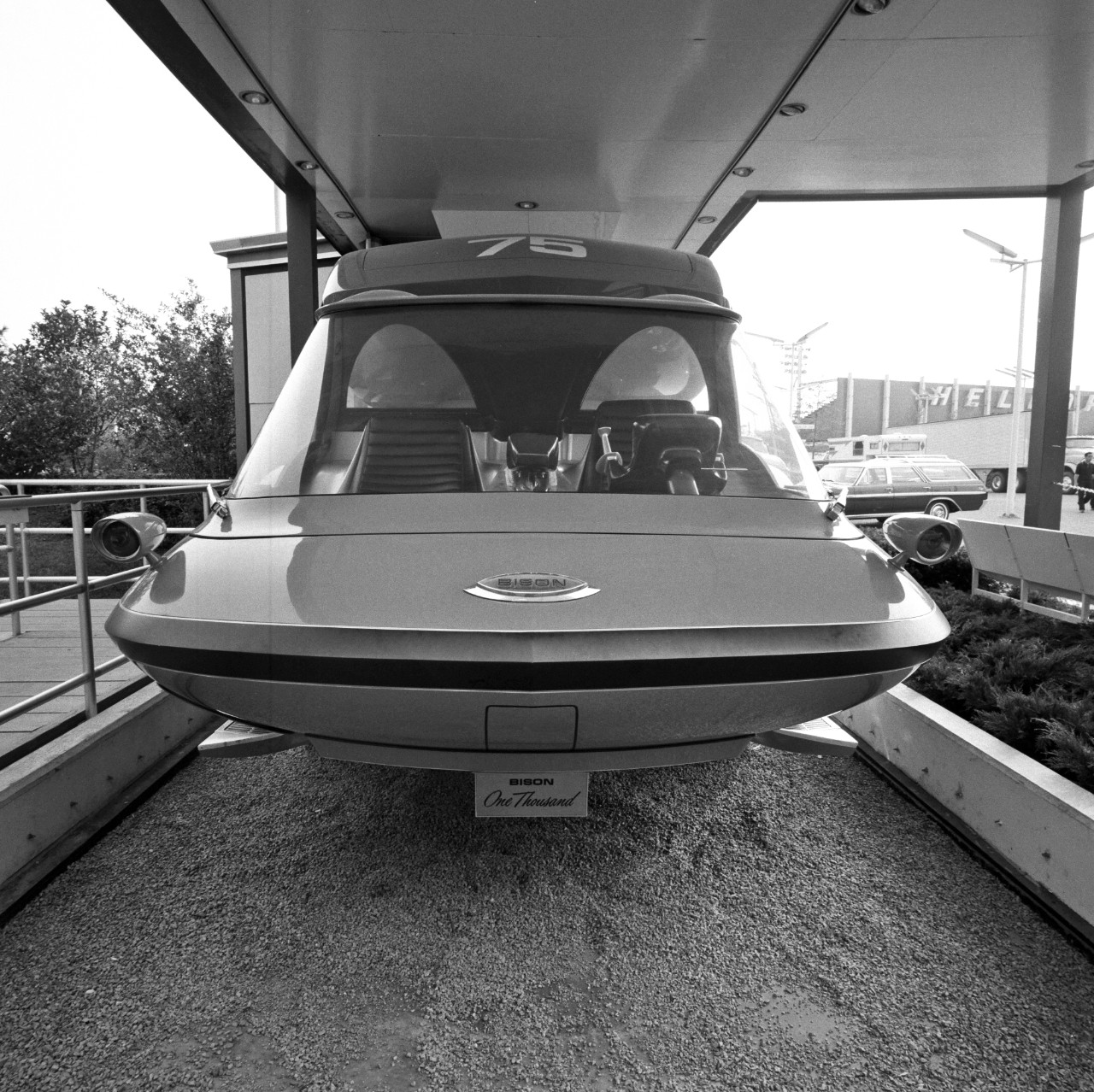
Turbo Titan III
In 1965, we took a more serious stab at turbine powered trucks, with the Chevrolet Turbo Titan III. The Turbo Titan III had huge air scoops in the front, with front headlights and turn signals that folded back when not in use. While it had a few design cues from the Bison, the Turbo Titan III looked more like a conventional tractor trailer. (It had actual doors, for instance, and a standard-sized trailer.) In promotional materials, GM noted that two previous versions – the Turbo Titan I and II – had “rolled up many thousands of miles … and proved conclusively the performance, economy and durability potential of the turbine.” (There’s little information to be found in the GM archive on the first two generations of Turbo Titans.) The Turbo Titan III brochure added that “the interior is right out of the space age” – and that that the exterior panels were produced from fiberglass-reinforced polyester.
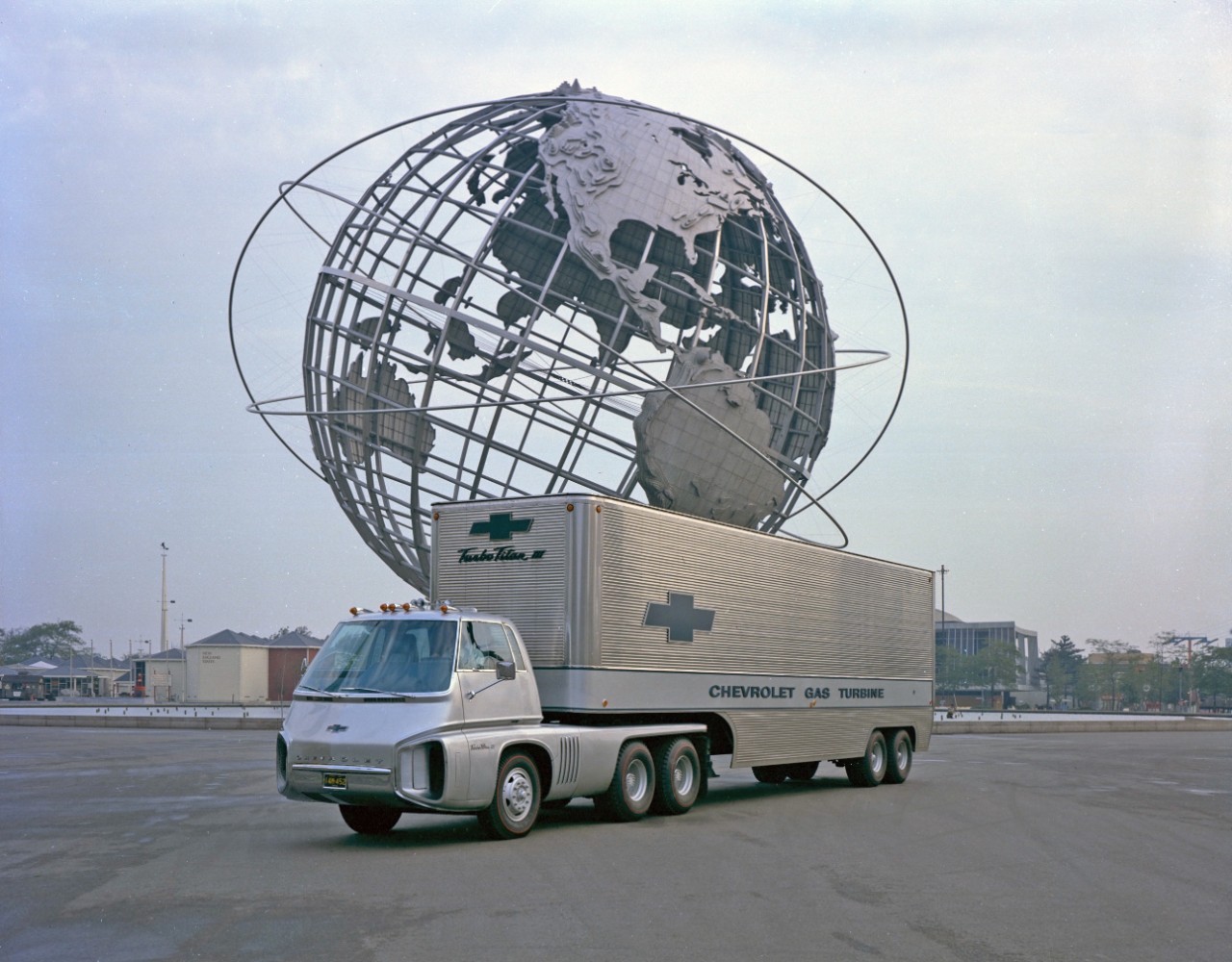
One odd feature of the “Truck of Tomorrow” was a twin-dial system that replaced the conventional steering wheel, an approach quite different from the one included in the Bison. (See the photo.) Powered by a successor to the Whirlfire, GM conceded at the time that the turbine design was “too costly to produce in quantity,” but that “with the kind of production know-how on tap at Chevrolet, it’s just a matter of time.”
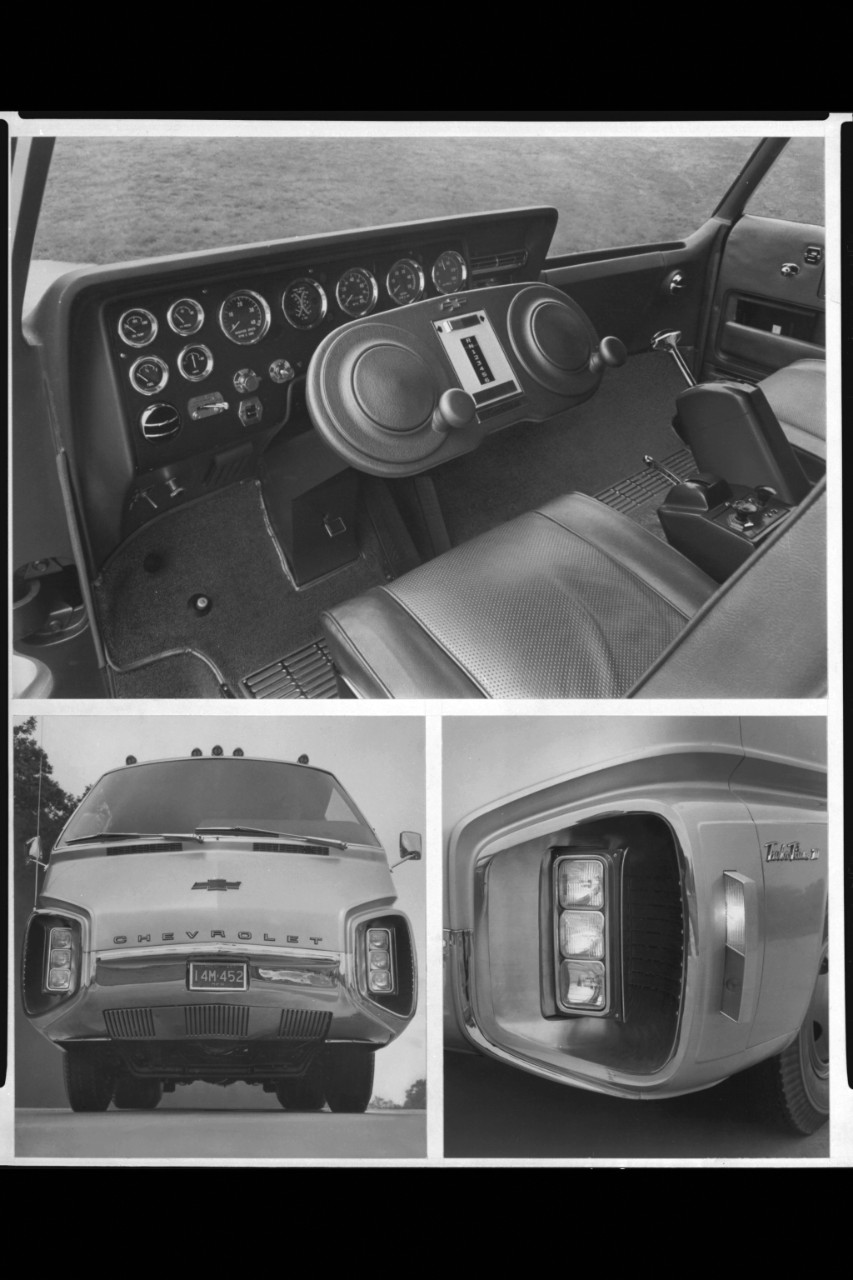
Coal cars
In June 1981, at an event marking the 25th anniversary of GM’s Warren, Michigan, technical center, GM showed off a new approach to the turbine engine opportunity, this time powered by – I’m not making this up – coal.
More specifically, GM demonstrated a Cadillac Eldorado and an Oldsmobile Delta 88 fitted with an engine powered by superfine powdered coal dust, with particles three microns in diameter, finer than powdered sugar. “Since coal represents a particularly attractive fuel because of its great abundance in the United States, it could significantly decrease our dependance on imported oil if it can be further developer for automotive use,” the company said in a press announcement of the coal-powered car experiment.
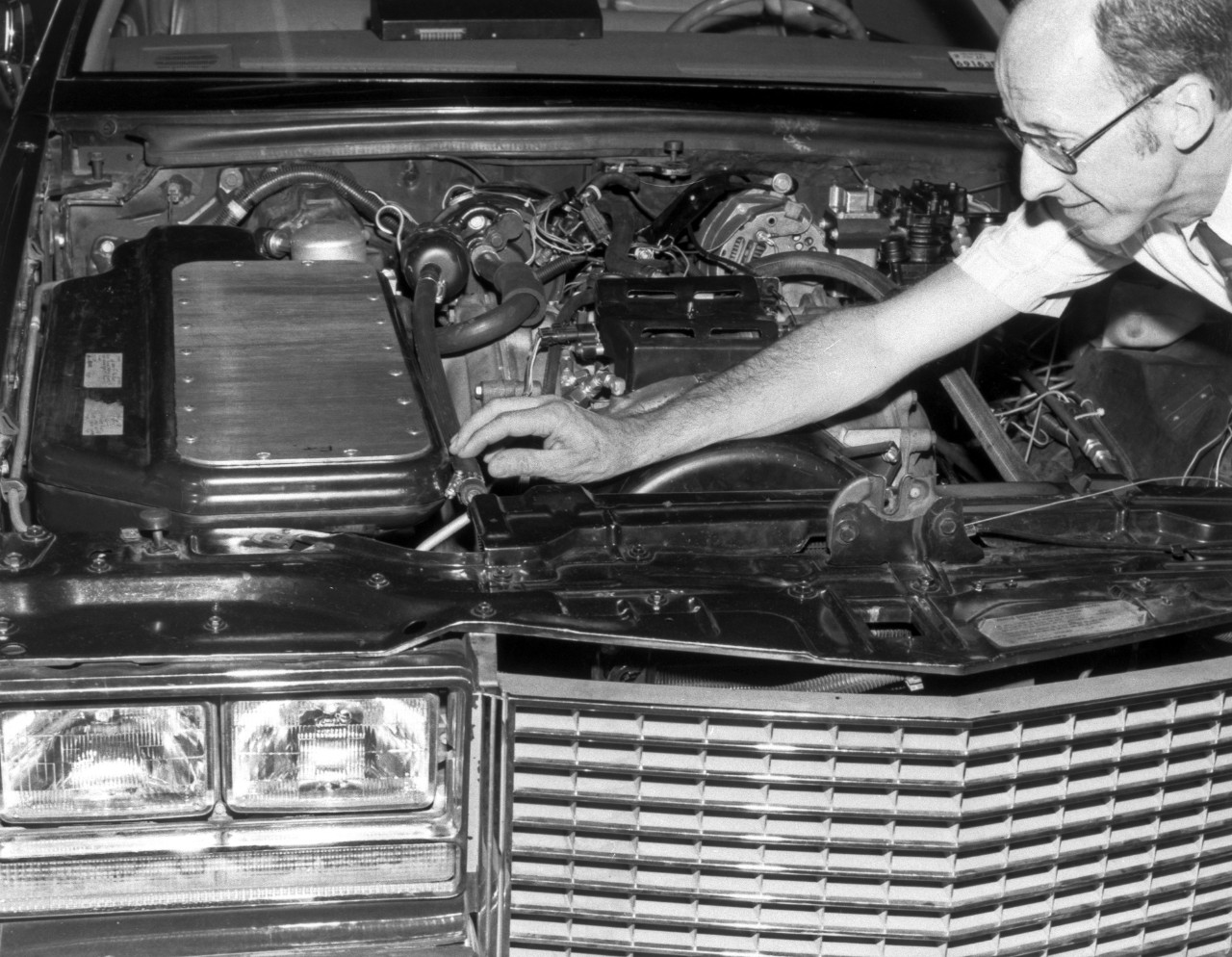
This was not actually a new idea. Rudolf Diesel – namesake of the diesel engine – had experimented with coal dust as a fuel decades earlier. With the GM experiments, the powdered coal was stored in a tank under the hood, attached to an air compressor that blew the fuel into the turbine engine. GM had previously tried engines powered by coal-derived methanol – but using coal dust directly was viewed as far more efficient, and potentially much cheaper than gasoline. And in fact coal is a much less expensive source of fuel than petroleum as measured by BTUs per dollar. But there were problems, not the least of which is that burning coal produces ash, smoke, and high levels of sulfur and other various pollutants.
The real point of the coal experiment was to demonstrate that GM was thinking about options to consider for the day when the world would run out of petroleum – no small concern in the wake of the 1970s energy crisis just a few years earlier.
“We’re just trying to show that we are not about to run out of energy,” GM Vice Chairman Howard Kehrl said at the time, according to the New York Times. “We can continue to have cars essentially as we know them today for hundreds of years.”
The bottom line
In an announcement about the Firebird and Turbocruiser experiments in 1955, we made a blunt assessment of the outlook for turbines.
“The question of whether the gas turbine will supplant the piston engine is likely to be resolved by economics,” we wrote in a press release. “GM engineers point out that if this engine ever offers the motorist more for his dollar than the piston engine, then his preference likely will favor the turbine.”
Of course, that’s not how it played out.
Jeffrey Luke, a 39-year GM vet who is now executive chief engineer for global engines, transmissions, hybrids, and racing propulsion programs, said in an interview with GM News that there were several reasons turbine engines didn’t work for wheeled passenger vehicles, related to fuel efficiency and emissions, cost, complexity and integration.
Turbine engines operate most efficiently in high load conditions and are thus unfeasible for cars and trucks that operate at part load, significantly impacting fuel economy. Emissions in the form of nitrogen oxided is very high. Also, the special materials used in the design of the compressor, combustion chamber and turbine are high cost and need special manufacturing processes to assemble. Finally, integration of turbine engines turned out to be “impractical,” he says.
“We could never make the business case, and it couldn’t be well integrated into a vehicle in a way that was practical,” Luke said. “And under today’s emissions standards, they would never make it.”
But it sure was fun trying.
Editor’s note: Retro Rides highlights noteworthy vehicles from the long history of General Motors. Over more than a century, GM has produced a huge variety of cars, trucks, SUVs, vans, station wagons, and even buses, some fondly remembered and sought after by collectors, others largely forgotten but worthy of rediscovery. With Retro Rides, we’re casting a fresh spotlight on some of GM’s great design, engineering and technology ideas of the past. Big thanks to the GM Heritage Center and Archives for making this series possible. If there’s a GM vehicle you think we should revisit, reach out to news@gm.com.
And catch up with all of our Retro Rides stories on GM News.